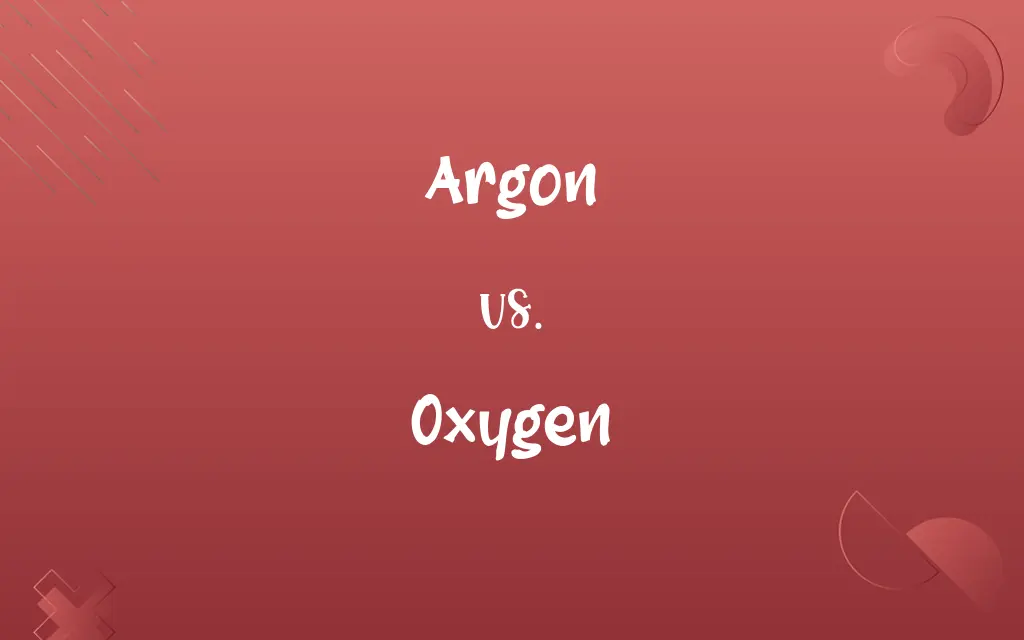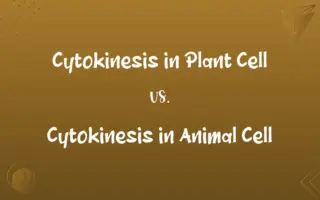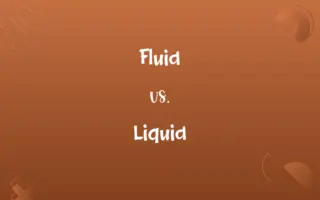Argon vs. Oxygen: Know the Difference

By Shumaila Saeed || Updated on December 25, 2023
Argon is an inert, colorless, odorless noble gas, often used in lighting and welding; Oxygen is a reactive, life-supporting element, crucial for respiration and combustion.

Key Differences
Argon is a noble gas, chemically inert due to its complete valence electron shell, making it stable and non-reactive. In contrast, Oxygen is highly reactive, essential for life processes like respiration and energy production.
Shumaila Saeed
Dec 24, 2023
In the periodic table, Argon is located in Group 18, known for its noble gases, characterized by their lack of chemical reactivity. Oxygen, however, is in Group 16, known for its reactivity and ability to form compounds with almost all other elements.
Shumaila Saeed
Dec 24, 2023
Argon's primary use is in inert environments needed for welding and in incandescent light bulbs to protect the filament. Oxygen's uses are more varied, including in medical applications, metal cutting, and as an essential element for life on Earth.
Shumaila Saeed
Dec 24, 2023
Argon makes up about 0.93% of Earth's atmosphere, which is significant for an inert gas. Oxygen, however, is far more abundant, composing about 21% of the Earth's atmosphere, and is vital for most forms of life.
Shumaila Saeed
Dec 24, 2023
Comparison Chart
ADVERTISEMENT
Main Uses
Inert environments, lighting
Respiration, combustion, metal cutting
Shumaila Saeed
Dec 24, 2023
Argon and Oxygen Definitions
Argon
Argon is a noble gas, used in fluorescent lights
The argon gas in these tubes helps create a bright light.
Shumaila Saeed
Dec 14, 2023
ADVERTISEMENT
Oxygen
Oxygen is used medically to treat respiratory issues
Patients with breathing problems often receive supplemental oxygen.
Shumaila Saeed
Dec 14, 2023
Argon
Argon is inert and non-reactive
Argon is preferred in welding because it doesn't react with metals.
Shumaila Saeed
Dec 14, 2023
Oxygen
Oxygen is a vital element for respiration
Without oxygen, humans cannot breathe.
Shumaila Saeed
Dec 14, 2023
Argon
Argon is used in double-pane windows for insulation
These windows are filled with argon to improve thermal efficiency.
Shumaila Saeed
Dec 14, 2023
Oxygen
Oxygen is a part of water (H2O)
Oxygen combines with hydrogen to form water.
Shumaila Saeed
Dec 14, 2023
ADVERTISEMENT
Argon
Argon is a colorless, odorless gas
The lab filled with argon remained devoid of any smell or color.
Shumaila Saeed
Dec 14, 2023
Oxygen
Oxygen is the most abundant element in the Earth's crust
Oxygen forms a significant part of the earth's surface.
Shumaila Saeed
Dec 14, 2023
Argon
Argon constitutes about 0.93% of the Earth's atmosphere
Despite being inert, argon is quite abundant in our air.
Shumaila Saeed
Dec 14, 2023
Oxygen
A nonmetallic element constituting 21 percent of the atmosphere by volume that occurs as a diatomic gas, O2, and in many compounds such as water and silica, and in iron ore. It combines with most elements, is essential for plant and animal respiration, and is required for nearly all combustion. Ozone, O3, is an allotrope of this element. Atomic number 8; atomic weight 15.9994; melting point -218.79°C; boiling point -182.9°C; gas density at 0°C 1.429 grams per liter; valence 2. See Periodic Table.
Shumaila Saeed
Dec 13, 2023
Argon
A colorless, odorless, inert gaseous element constituting approximately one percent of the earth's atmosphere, from which it is commercially obtained by fractionation for use in electric light bulbs, fluorescent tubes, and radio vacuum tubes and as an inert gas shield in arc welding. Atomic number 18; atomic weight 39.948; melting point -189.36°C; boiling point -185.85°C. See Periodic Table.
Shumaila Saeed
Dec 13, 2023
Oxygen
The chemical element (symbol O) with an atomic number of 8 and relative atomic mass of 15.9994. It is a colorless and odorless gas. Category:en:Oxygen
Shumaila Saeed
Dec 13, 2023
Argon
The chemical element (symbol Ar) with an atomic number of 18. The third most abundant gas in the Earth's atmosphere, it is a colourless, odourless, inert noble gas.
Shumaila Saeed
Dec 13, 2023
Oxygen
Molecular oxygen (O2), a colorless, odorless gas at room temperature, also called dioxygen.
Shumaila Saeed
Dec 13, 2023
Oxygen
(medicine) A mixture of oxygen and other gases, administered to a patient to help them breathe.
Shumaila Saeed
Dec 13, 2023
Argon
A colorless, odorless gas occurring in the air (of which it constitutes 0.93 per cent by volume), in volcanic gases, etc.; - so named on account of its inertness by Rayleigh and Ramsay, who prepared and examined it in 1894-95. Symbol, A; at. wt., 39.9. Argon is condensible to a colorless liquid boiling at -186.1° C. and to a solid melting at -189.6° C. It has a characteristic spectrum. No compounds of it are known, but there is physical evidence that its molecule is monatomic. Weight of one liter at 0° C. and 760 mm., 1.7828 g.
Shumaila Saeed
Dec 13, 2023
Argon
A colorless and odorless inert gas; one of the six inert gases; comprises approximately 1% of the earth's atmosphere
Shumaila Saeed
Dec 13, 2023
Oxygen
(figurative) A condition or environment in which something can thrive.
Silence is the oxygen of shame.
They hoped to starve the terrorists of the oxygen of publicity.
Shumaila Saeed
Dec 13, 2023
Oxygen
A colorless, tasteless, odorless, gaseous element of atomic number 8, occurring in the free state in the atmosphere, of which it forms about 23 per cent by weight and about 21 per cent by volume, being slightly heavier than nitrogen. Symbol O. Atomic weight 15.9994.
Shumaila Saeed
Dec 13, 2023
Oxygen
A nonmetallic bivalent element that is normally a colorless odorless tasteless nonflammable diatomic gas; constitutes 21 percent of the atmosphere by volume; the most abundant element in the earth's crust
Shumaila Saeed
Dec 13, 2023
Repeatedly Asked Queries
Is Argon used in medicine?
Rarely, except in some types of laser treatments.
Shumaila Saeed
Dec 24, 2023
What are the industrial uses of Argon?
Welding, lighting, and manufacturing.
Shumaila Saeed
Dec 24, 2023
What are the industrial uses of Oxygen?
Metal cutting, welding, and chemical production.
Shumaila Saeed
Dec 24, 2023
Can Argon support life?
No, it's inert and doesn't participate in biological processes.
Shumaila Saeed
Dec 24, 2023
Why is Oxygen reactive?
It has a high electronegativity and a valence of 2.
Shumaila Saeed
Dec 24, 2023
Does Oxygen react with water?
It's part of water and can form oxides with other elements.
Shumaila Saeed
Dec 24, 2023
Is Oxygen heavier than air?
No, it's lighter than many gases but denser than hydrogen and helium.
Shumaila Saeed
Dec 24, 2023
Share this page
Link for your blog / website
HTML
Link to share via messenger
About Author
Written by
Shumaila SaeedShumaila Saeed, an expert content creator with 6 years of experience, specializes in distilling complex topics into easily digestible comparisons, shining a light on the nuances that both inform and educate readers with clarity and accuracy.

































































